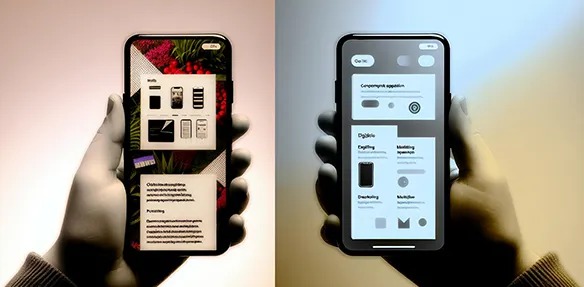
Here’s what you need to know about testing mobile apps in portrait and landscape modes:
- It’s crucial for user experience
- Combine manual and automated testing
- Test on real devices, not just emulators
- Consider accessibility (WCAG 2.1 requires both orientations)
- Use cross-platform testing tools when possible
Key testing areas:
- UI elements (resizing, repositioning)
- Functionality in both orientations
- Content adaptation across screen sizes
- Performance on different networks
Quick Comparison:
| Aspect | Manual Testing | Automated Testing |
|---|---|---|
| Accuracy | Good for subtle issues | Precise for repetitive tests |
| Speed | Slower | Faster, tests multiple devices |
| Cost | Low upfront, high long-term | High upfront, low long-term |
| Flexibility | Great for complex scenarios | Limited to programmed tests |
| Device Coverage | Limited by testers | Wide device range |
Remember: Good testing leads to happy users. Mix manual and automated methods for best results.
Manual Testing
Manual testing for portrait and landscape modes is hands-on. Testers physically interact with apps on real devices, switching orientations to spot issues.
What manual testers look for:
- UI elements: Do buttons, text, and images resize correctly?
- Functionality: Do features work in both orientations?
- User experience: Does the app feel natural in each mode?
The big plus? Manual testing mimics real user behavior. Testers can switch orientations quickly, just like actual users.
“Manual testing catches subtle UI glitches and usability issues that automated tests might miss”, says Sarah Chen, QA Lead at MobileTech Solutions.
But it’s not perfect. Manual testing takes time and can’t cover all device-OS combos. That’s why many teams mix manual and automated testing.
Quick tips for manual testing:
- Use real devices, not just emulators
- Test on various screen sizes
- Check both iOS and Android
- Rotate the device multiple times during a single user flow
For iOS, testers can use XCUIDevice.shared.orientation to check the current interface orientation.
Android needs extra care. When a device rotates, Android usually destroys and recreates Activities and Fragments. Testers must ensure the app handles this smoothly.
Manual testing is great for:
- Multi-touch gestures
- Visual elements
- Exploratory testing
2. Automated Testing
Automated testing tools are game-changers for checking mobile apps across screen orientations. They quickly test apps in portrait and landscape modes, catching issues that manual testing might miss.
Here’s the lowdown on automated testing for screen orientations:
- Pre-test setup
You can set the screen orientation before running tests. Here’s an Appium example with Java:
DesiredCapabilities caps = new DesiredCapabilities();
caps.setCapability("deviceName", "My Device");
caps.setCapability("orientation", "LANDSCAPE");
AndroidDriver driver = new AndroidDriver(new URL("http://127.0.0.1:4723/wd/hub"), caps);
- Mid-test orientation changes
Tests can flip orientations during execution:
ScreenOrientation orientation = driver.getOrientation();
driver.rotate(ScreenOrientation.LANDSCAPE);
Automated tests check:
- UI element scaling and repositioning
- Functionality in both orientations
- Content adaptation across screen sizes
- Layout consistency between breakpoints
Many teams use real device clouds for testing. BrowserStack, for example, offers access to thousands of real devices for Appium tests. This helps catch device-specific issues that emulators might miss.
“Using real devices for automated testing has helped us catch 30% more orientation-related bugs compared to emulators alone”, says Alex Lee, QA Manager at MobileTech Solutions.
Tools like Sauce Labs’ Sauce Mobile can test apps across many devices and orientations quickly. For web apps, Chrome Developer Tools and Hoverify’s Responsive Viewer help check responsive designs in various orientations.
When setting up automated tests, make sure to:
- Test all app functionalities in both orientations
- Verify that changing orientation doesn’t erase current page activities
- Check for performance issues in different orientations
Good and Bad Points
Manual and automated testing for mobile app orientations each have their pros and cons. Let’s break it down:
| Aspect | Manual Testing | Automated Testing |
|---|---|---|
| Accuracy | Human error risk | Precise for repetitive tests |
| Speed | Slower | Faster, tests multiple devices |
| Cost | Low upfront, high long-term | High upfront, low long-term |
| Flexibility | Great for complex scenarios | Limited to programmed tests |
| Device Coverage | Limited by testers | Wide device range |
| Real-world Simulation | Mimics user behavior | May miss UX nuances |
Manual testing excels at:
- Catching subtle UI orientation issues
- Immediate UX feedback
- Handling complex scenarios
But it’s:
- Time-consuming
- Potentially inconsistent
- Inefficient for repetitive tests
Automated testing shines with:
- Speed across multiple devices
- Consistent results
- Long-term cost-effectiveness
However, it:
- Needs big upfront investment
- Might miss subtle UX problems
- Struggles with unpredictable scenarios
“Combining manual and automated testing caught 30% more orientation bugs than either method alone”, - Alex Lee, QA Manager at MobileTech Solutions.
The takeaway? Use both. Let manual testing tackle complex scenarios and UX, while automation handles repetitive checks across devices.
Wrap-up
Testing mobile apps in portrait and landscape? It’s crucial for a great user experience. Here’s what you need to know:
- Mix manual and automated testing
Manual testing catches subtle UI issues. Automated testing? It’s fast and consistent across devices.
- Use annotations for orientation changes
Avoid issues when switching orientations. Use annotations to set and revert orientations before and after tests:
@Before
fun change(){
MyRule.scenario.onActivity { activity ->
activity.requestedOrientation = ActivityInfo.SCREEN_ORIENTATION_PORTRAIT
}
}
@After
fun changeBack(){
MyRule.scenario.onActivity { activity ->
activity.requestedOrientation = ActivityInfo.SCREEN_ORIENTATION_PORTRAIT
}
}
- Don’t forget accessibility
WCAG 2.1 says support both orientations. Make sure your app works well in landscape mode. Why? Many users prefer it.
- Test on real devices
Emulators are okay, but real devices give you the best results. You’ll spot real-world issues you might miss otherwise.
- Think cross-platform
Developing for multiple platforms? Choose testing tools that work across them. Write tests once, run them everywhere. It’s a time-saver.
Remember: Good testing leads to happy users. And happy users? That’s what we’re all after.
